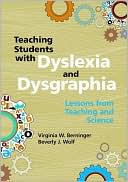Category Books
- Fiction Books & Literature
- Graphic Novels
- Horror
- Mystery & Crime
- Poetry
- Romance Books
- Science Fiction & Fantasy
- Thrillers
- Westerns
- Ages 0-2
- Ages 3-5
- Ages 6-8
- Ages 9-12
- Teens
- Children's Books
- African Americans
- Antiques & Collectibles
- Art, Architecture & Photography
- Bibles & Bible Studies
- Biography
- Business Books
- Christianity
- Computer Books & Technology Books
- Cookbooks, Food & Wine
- Crafts & Hobbies Books
- Education & Teaching
- Engineering
- Entertainment
- Foreign Languages
- Game Books
- Gay & Lesbian
- Health Books, Diet & Fitness Books
- History
- Home & Garden
- Humor Books
- Judaism & Judaica
- Law
- Medical Books
- New Age & Spirituality
- Nonfiction
- Parenting & Family
- Pets
- Philosophy
- Political Books & Current Events Books
- Psychology & Psychotherapy
- Reference
- Religion Books
- Science & Nature
- Self Improvement
- Sex & Relationships
- Social Sciences
- Sports & Adventure
- Study Guides & Test Prep
- Travel
- True Crime
- Weddings
- Women's Studies
Teaching Students with Dyslexia and Dysgraphia: Lessons from Teaching and Science » (1st Edition)

Authors: Virginia W. Beminger, Beverly J. Wolf
ISBN-13: 9781557669346, ISBN-10: 1557669341
Format: Paperback
Publisher: Brookes, Paul H. Publishing Company
Date Published: May 2009
Edition: 1st Edition
Author Biography: Virginia W. Beminger
Book Synopsis
How can teachers provide effective literacy instruction for students with learning differences—while meeting the needs of all students in the class? Finally, a single accessible textbook answers that question for every K–12 educator. The only teacher training text to cover the three learning disabilities that require differentiated instruction—dysgraphia, dyslexia, and oral and written language learning disability (OWL LD)—this book prepares educators to teach students with learning differences in explicit, reflective, and intellectually engaging ways.
Ginger Berninger, a seasoned researcher and former teacher, partners with 40-year teacher and teacher trainer veteran Beverly Wolf for a one-of-a-kind text that gives readers the best of both worlds: critical insights from scientific studies and lessons learned from actual teaching experience. Educators will get the research-based guidance they'll need to
- organize their classrooms, routines, and lesson plans through differentiated instruction to meet instructional needs of students with learning differences and their peers
- improve every aspect of students' literacy, including reading, writing, listening, and speaking skills, by providing both oral and written language instruction
- create a positive learning environment that promotes intellectual engagement
- apply a specific framework for instruction that helps students overcome working memory inefficiencies and fluency problems
- consider how preservice teachereducation and inservice professional development can prepare teachers for differentiated instruction in general education
Throughout the book, relevant research findings from diverse fields—including genetics, neuroscience, cognitive science, linguistics, and education—show teachers the why behind the how. And the extensive instructional guidelines, applicable across school settings and specific curricula, offer innovative approaches to practice that will help teachers successfully meet the needs of individual students. An essential part of every teacher's preparation, this text ensures that educators are ready to deliver effective, individually tailored instruction to students with dysgraphia, dyslexia, and oral and written language disabilities.
Table of Contents
Subjects
 Special Education
Special Education  Education - Learning Disabilities
Education - Learning DisabilitiesEducation & Teaching
 Teaching Reading & Language
Teaching Reading & Language  Teaching - Language Arts
Teaching - Language ArtsNonfiction
 Philosophy
Philosophy  Linguistics & Semiotics
Linguistics & SemioticsNonfiction
 Psychology
Psychology  Psychological Disorders
Psychological DisordersPhilosophy
 Linguistics & Semiotics
Linguistics & Semiotics  Linguistics & Semiotics - General & Miscellaneous
Linguistics & Semiotics - General & Miscellaneous
